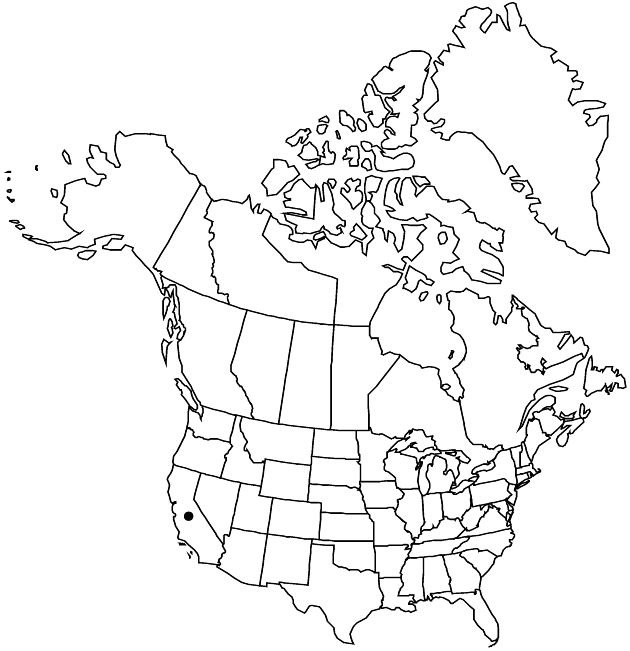Difference between revisions of "Calycadenia hooveri"
Brittonia 27: 140, fig. 19. 1975.
FNA>Volume Importer |
FNA>Volume Importer |
(No difference)
| |
Revision as of 18:49, 24 September 2019
Plants 10–60 cm; self-compatible. Stems branched (branches relatively many, distal, filiform, flexible, minutely scabrous, glandular). Leaves mostly alternate, 1–6(–8) cm, ± thinly hispidulous and ± long-hairy (especially proximal margins and adaxial faces). Heads borne singly or in ± spiciform arrays (1–4 per node). Peduncular bracts subclaviform, 1–5 mm (hispidulous, sometimes ± pectinate-fimbriate), apices rounded, tack-glands 1 (terminal). Phyllaries 2.5–3.5 mm, abaxial faces ± hispidulous (hairs scattered, stout), ± shaggy long-hairy distally, especially margins, minutely glandular, tack-glands (0–)1 (terminal). Paleae 3–5 mm (vestiture similar to phyllaries, tack-glands 0). Ray florets (0–)1(–2); corollas white, tubes ca. 2 mm, laminae 2–3.5 mm (central lobes smaller than laterals, widest at bases, symmetric, sometimes 2-partite, laterals weakly asymmetric, sinuses ca. 2/3 laminae). Disc florets 1–2; corollas white, 2.5–3.5 mm. Ray cypselae 1.5–2.5 mm, smooth to rugose, glabrous. Disc cypselae 2–3 mm, ± appressed-hairy; pappi of 6–13 lanceolate-aristate, scales 1.5–2.5 mm. 2n = 14.
Phenology: Flowering spring–summer.
Habitat: Rocky, exposed places
Elevation: 100–400 m
Discussion
Calycadenia hooveri resembles variants of Calycadenia pauciflora; it is more closely related to C. villosa (G. D. Carr 1975b). Calycadenia hooveri is known only from the Sierra Nevada foothills of Calaveras, Mariposa, and Stanislaus counties.
Selected References
None.
